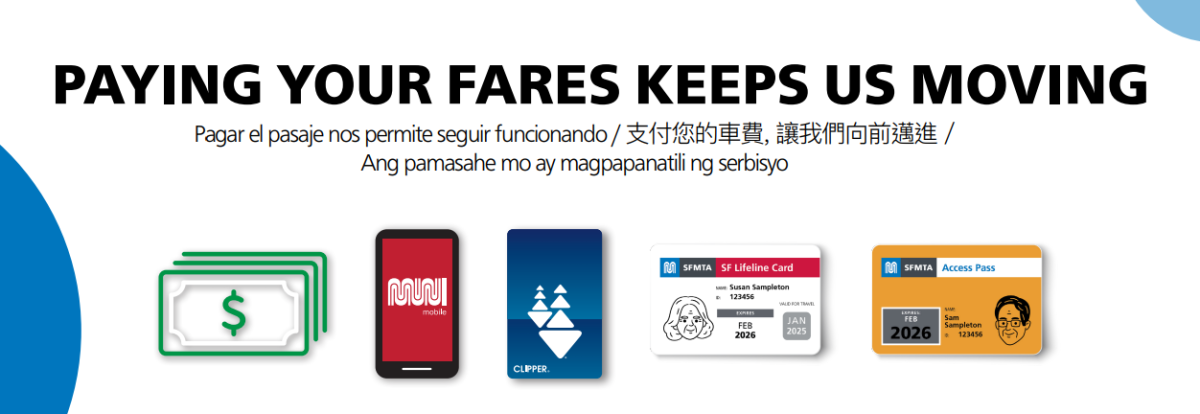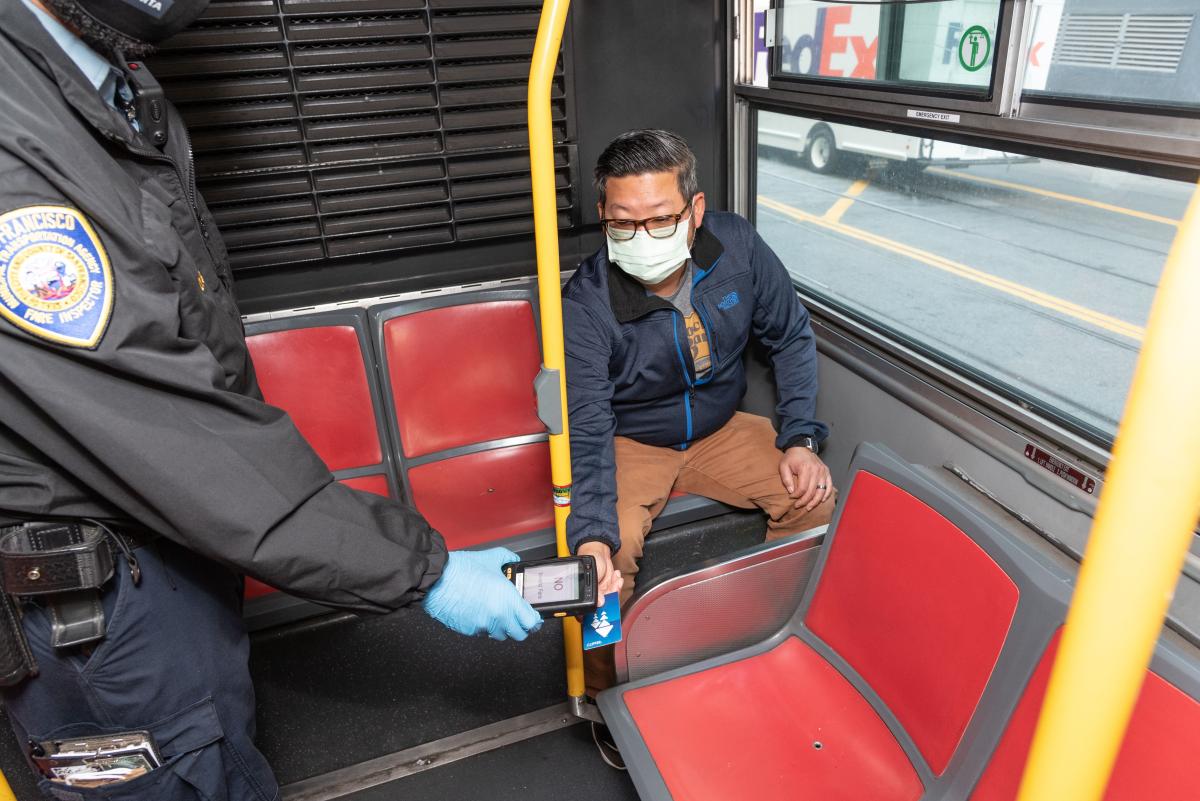
It can happen to anyone. You are in a rush and need to get to an important appointment. Your phone’s battery runs out. Or your Clipper Card only has a dollar left in the account. You hop on the next bus and skip paying the fare. You cross your fingers that no one checks for your proof of payment.
This individual example may seem harmless. Yet, when tens of thousands of riders every day do not pay their fare, it ends up costing Muni millions every year.
Our partners at the San Francisco County Transportation Agency (SFCTA) recently wrote a piece describing the challenging fiscal situation facing Muni and other transit agencies since the COVID-19 pandemic.
Starting in 2026, the federal and state relief that has kept Muni moving will end. Without these relief funds, we must find local and regional solutions to the problem. Addressing fare evasion is an important part of closing that deficit.
We will solve this together
Riders are more satisfied with Muni service now than ever before. Even with this good news, we will continue to improve and innovate to meet rider needs and expectations.
Paying the fare is a requirement, but it's more than that. When riders pay their fares, they support Muni service. The fare represents your part to keep the system running.
We are happy to report that most riders pay their fares when they ride. However, close to 20% of riders do not pay their fare, a greater number than from before the pandemic.

Prepare to show proof of payment when transit fare inspectors board your vehicle.
What we are doing
To address fare evasion, we continue to hire transit fare inspectors. As our team grows, riders are more likely to see inspectors checking for proof of payment.
In the past month, the number of inspections has doubled over the same time the previous year. Our goal is to keep increasing this number over the next few months.
When you see a transit fare inspector team board a bus or Muni Metro, prepare to show them your fare payment. You can be confident that our inspectors are trained in de-escalation techniques and are there to improve the rider experience. Their presence helps keep the system safe and running smoothly.
Inspectors are there to ensure fare compliance and educate riders. When they speak with a rider who has not paid the fare, they share information about Muni’s free and reduced fare programs.
Promoting the Lifeline, Access and Clipper START programs is a core aspect of our fare compliance effort. These programs help those with low or no incomes use Muni to get around town. If a rider qualifies and applies for Lifeline, Access or Clipper START within 30 days of receiving a transit citation, they can have the citation dismissed. The SFMTA does not seek to punish riders in our fare compliance efforts.
Day in the life of a transit fare inspector
Transit fare inspectors are good people with a tough job. They are here to ensure the system runs smoothly and to improve the rider experience. To get a better sense of a Day in the Life of a Transit Fare Inspector, check out the video below:
Fare compliance educational campaign
To help transit fare inspectors in their work, we have launched a campaign to reduce fare evasion. We are stressing the importance of having proof of payment for every Muni ride. The campaign informs riders of the many ways to pay. It also reminds them that not all forms of fare payment require tapping the farebox.
Ultimately, our goal is for riders to prepare their fare when they plan their trip. A good place to start is our How to Ride Muni Quick Start Guide (SFMTA.com/HowtoRide).
Riders will see information on our website, our social media channels and on buses and Muni Metro. We will also be engaging with community organizations and city partners that work with people with low to no-incomes to raise awareness about our reduced fare programs.
To stay up to date on our efforts to address fare evasion, visit our Fare Share webpage (SFMTA.com/FareShare). Share the information with your friends.